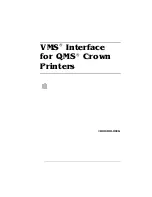
as the RDF takeover operation completes and you will have full TMF protection. For more
details see the discussion on
“TMF and Online Dumps on the Backup System” (page 154)
.
4.
Most customers require a high-level decision to takeover on the backup system; this is not
an automated decision for the majority of RDF users; most require an executive level decision
to takeover.
a.
Make sure your system operators have a hierarchical list of who to contact in case of
the loss of your primary system. This will save time in getting executive authorization
and initiating the takeover on the backup
b.
Determine in advance what constitutes a failure of the primary system so that the process
for escalation to the executive decision level can be started as soon as possible.
c.
If the criteria for determining a failure is complicated, write it down; the last thing you
want to do during a real disaster time is to try to remember everything.
5.
Have a solid disaster recovery plan in place that covers all the different tasks that need to
be done in order to switch operations to the backup. Write out all of your disaster recovery
plans to avoid having to recall them from memory when your anxiety is already high as a
result of the unplanned outage.
6.
If you have command and control files on your primary system that are copied to your
backup as part of your RDF set up, be sure you revise these on your backup system to reflect
the hardware and software configurations on your backup system. For example, if you have
a fewer CPUs on your back up system, be sure that your command and control scripts do
not contain references to CPUs that exist on the primary but not on the backup. Be sure you
have replaced all references to the name of the primary system with the name of the backup
system in command and control files.
7.
RDF does provide the “!” option on Takeover command. If specified, it eliminates the user
prompt and it eliminates the check to reach the primary system, thereby eliminating the
Expand level-4 timer. But, before you use this option, you should consider the following
points:
a.
How do you know if the primary system is down? By having RDFCOM check to see if
the primary system is accessible, you avoid starting a takeover operation by mistake.
While the check does involve the Expand level-4 timer wait (5 minutes by default), you
should not lower that timer because it can have many other side-effects that you do not
want.
b.
For the majority of RDF users, issuing the RDF Takeover command is neither an
automated operation nor is it typically executed without high-level approval, often
executive level. Depending on the time of day or evening when the outage occurs, it
may take much more time than the level-4 timer delay, thereby making that delay
inconsequential.
8.
For the typical SQL requestor-server environment, you can start servers on both primary
and backup systems at all times, but you must ensure that ensure no work is ever routed to
servers on the backup system.
a.
SQL files are only opened on demand; hence by having your servers up and running
on your backup system at all times, you can avoid the time it takes to start them when
you encounter a takeover or switchover situation. It does mean that when you eventually
route work to these servers after a takeover or switchover, it may take time to have
them open up the backup database, but you avoid the cost of a cold startup.
b.
Similarly, start Pathway servers and freeze them before they open any files; this
eliminates having to cold-start them after a takeover or switchover.
c.
If you use the same application for query processing as well as read/write access, and
you are already performing query processing on your backup database, you will need
to have the application close all files currently open for read-only access, and then
reopen them for read/write access after the RDF takeover. In this sense, it may be
Takeover Operations
145
Summary of Contents for NonStop RDF
Page 68: ...68 ...
Page 186: ...186 ...
Page 260: ...260 ...
Page 278: ...278 ...
Page 284: ...284 ...
Page 290: ...290 ...
Page 308: ...308 ...
Page 322: ...322 ...
Page 336: ...336 ...
Page 348: ...348 ...
Page 464: ...464 ...
Page 478: ......
















































